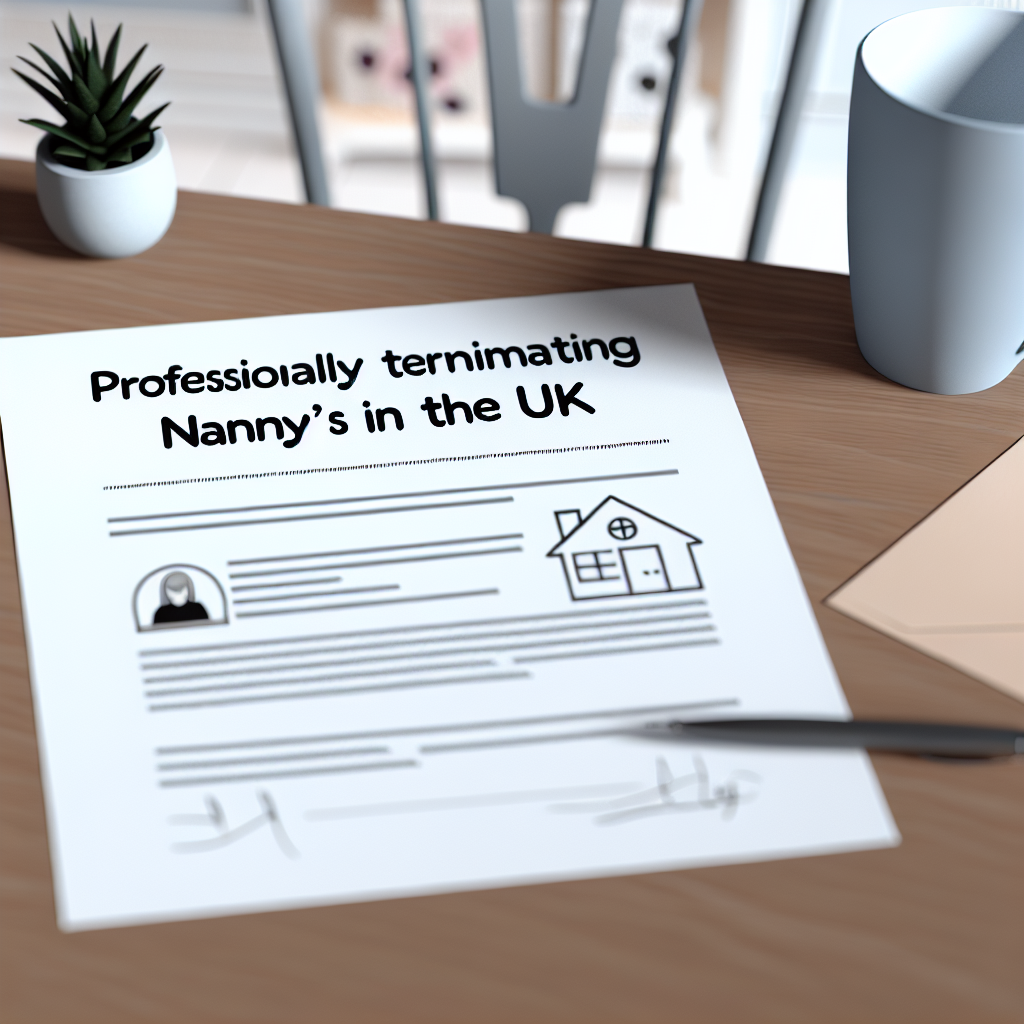
Firing a nanny can be a challenging decision for families in the UK. The strong bond that often develops between a nanny and the children they care for makes this process emotionally charged. As HR professionals, understanding the implications of this decision and the correct procedures to follow is vital. In this guide, we will navigate the essential steps to take when terminating a nanny’s employment in the UK, ensuring that the process is handled both professionally and sensitively.
Importance of a Thoughtful Termination Process
The role of a nanny is pivotal in a child’s growth and development. Their dismissal not only affects the children but also has far-reaching consequences for the family dynamic. Thus, it is crucial to approach the termination process with care, following a fair and reasonable method to mitigate possible legal repercussions and maintain a professional rapport. This is particularly significant in light of the evolving legislative framework concerning employment rights.
Current Trends in Employment Law
Legislative Framework
Since the repeal of the statutory dismissal and disciplinary procedures in 2009, employers are expected to adhere to a fair process as outlined in the revised ACAS Code of Practice on disciplinary and grievance procedures. This framework emphasises the need to document all interactions and actions taken during the termination process.
Legal Obligations
Employers must comply with employment laws and local regulations, including providing written notice of termination. For example, in New York State, this notice should be issued no later than five working days after the termination date. Although UK law does not have such stringent requirements, adhering to these practices can serve as a useful guide for families in the UK as well.
Understanding Redundancy Pay
Nannies, like any other employees, may be entitled to redundancy pay, particularly if they have been with the family for over two years. The amount granted depends on various factors including age and length of service, following a specific calculation: half a week’s pay for each year prior to reaching 22, one week’s pay for ages 22 to 41, and one and a half week’s pay for those over 41 [source].
Steps for Firing a Nanny
1. Open Communication
- Initial Discussion: Before reaching a decision to terminate, hold an open and honest discussion with the nanny regarding any issues or concerns. This dialogue can sometimes address problems or lead to improvements, making termination unnecessary [source].
- Clarifying Reasons: When it becomes clear that termination is the only option, clearly articulate the reasons in the conversation or termination letter. Transparency fosters respect in the relationship.
2. Implement a Staged Approach
- Improvement Period: If appropriate, allow the nanny a chance for improvement before making the decision official. This shows that the decision to terminate was not taken lightly.
- Personal Meeting: Convey the decision face-to-face rather than through other means. This personal touch is vital in showing respect during the process.
3. Proper Documentation
- Draft a Termination Letter: Prepare a formal termination letter. This should include the reasons for termination, the date of the last working day, and details regarding final pay and benefits. Ensure this letter is signed by both parties [source].
- Ensure Legal Compliance: Verify that all legal requirements are fulfilled. This includes issuing a written notice of termination and adhering to redundancy pay laws.
4. Returning Personal Belongings
Arrange for the nanny to return any property belonging to the family, such as keys or cards. Specify a date and time for this exchange to ensure all belongings are returned promptly [source].
5. Providing References
- Offer Recommendation: If appropriate, consider issuing a letter of recommendation or being a reference for the nanny’s future employment opportunities. This assists in facilitating their next professional engagement [source].
- Support Networking: Mention your willingness to support their job search in the termination letter or conversation. Such support can be immensely beneficial.
6. Express Gratitude
In both the conversation and termination letter, take a moment to express appreciation for the nanny’s contributions. Demonstrating gratitude fosters mutual respect and aids in making the ending less painful for both parties [source].
Advantages of a Thoughtful Termination Process
- Legal Protection: Implementing a fair process aids in averting potential legal disputes and reduces the risk of increased compensation claims at employment tribunals [source].
- Professional Reputation: Conducting the termination proceedings professionally helps to sustain a positive relationship, which can facilitate smoother transitions for both the family and the nanny.
- Job Searching Support: Providing support in the form of references is crucial for the nanny’s future employment prospects and demonstrates a commitment to their career.
- Achieving Closure: A structured, clear process allows both parties to achieve closure, ensuring all aspects are addressed respectfully and comprehensively.
Conclusion
In summary, dismissing a nanny in the UK is a process that should be approached with careful attention to legal details, open communication, and thorough documentation. By following the outlined steps, HR professionals and families can conduct the termination process in a professional manner that respects both the nanny’s contributions and the family’s needs.
For further reading on best practices for terminations and employee relations, feel free to explore the resources linked throughout this article.
Vadim Kouznetsov is a distinguished entrepreneur and the visionary founder and CEO of JobXDubai.com, the UAE’s rapidly expanding job board. Renowned for his expertise in bridging the gap between job seekers and employment opportunities, Vadim has become a leading authority in the recruitment and job market of Dubai.
